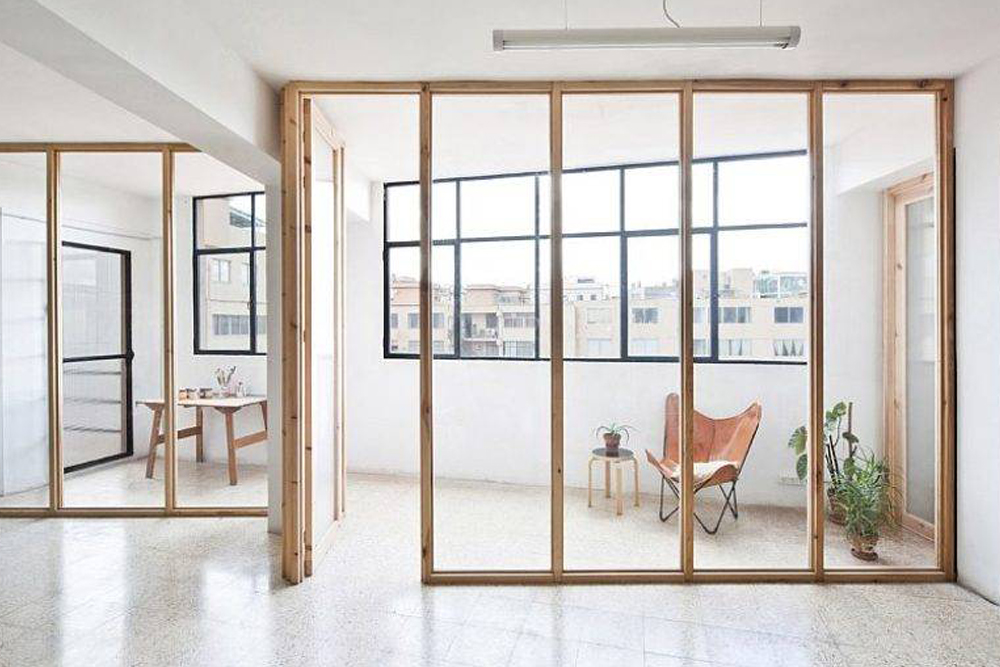
When designing or remodeling interiors, partitions play a vital role in shaping space without sacrificing aesthetics. Among the most popular choices are glass and wood partitions—each offering a unique blend of style, functionality, and practicality. Whether you're organizing an open-plan office, dividing a studio apartment, or adding privacy to a commercial space, selecting the right material is critical.
In this comprehensive guide, we’ll explore the key differences between glass and wood partitions, including their visual impact, maintenance needs, cost, and performance in both residential and commercial interiors. By the end, you’ll be well-equipped to decide which partition type best fits your space.
Aesthetic Appeal: Transparency vs. Warmth
Glass Partitions: Modern and Airy
Glass partitions are synonymous with sleek, contemporary design. Their ability to transmit natural light makes them ideal for small or dark areas, creating a sense of openness and connectivity. Popular options include:
Clear tempered glass for maximum light
- Frosted glass for added privacy
- Tinted or colored panels for decorative accents
- Frameless systems for a minimalist look
- They work exceptionally well in:
- Modern offices
- Conference rooms
- Urban loft apartments
- Commercial showrooms
Key benefits:
- Visually expand interior spaces
- Encourage collaboration in workspaces
- Blend with almost any color palette or decor style
Wood Partitions: Classic and Textured
- On the other hand, wood partitions bring natural warmth and character. From rustic oak panels to modern slatted dividers, wood introduces texture and depth that glass can’t replicate. Wood is versatile in:
- Traditional or transitional homes
- Boutique retail interiors
- Cozy restaurants or cafes
- Heritage renovations and restoration projects
Advantages:
- Enhances warmth and comfort
- Can be carved, painted, or stained to match existing décor
- Offers a timeless, natural aesthetic
Durability and Maintenance
- Glass: Low Maintenance and Long-Lasting
- Glass partitions are highly resistant to scratches, water damage, and stains. Their non-porous surface makes cleaning simple with glass cleaner or soap and water. However, it’s important to:
- Install safety-tempered or laminated glass for durability
- Regularly clean to maintain a streak-free appearance
- Avoid abrasive cleaners that may damage coatings
Ideal for: High-traffic environments where hygiene is key—think medical clinics, salons, or corporate offices.
Wood: Robust but Requires Care
Wood partitions offer strength but require more attention. Depending on the finish, they may be vulnerable to humidity, pests, or surface wear. Proper sealing and occasional refinishing will maintain their look and performance.
Tips for long-term maintenance:
Use wood protectants to resist moisture
Choose hardwoods (like oak or walnut) for high-traffic areas
Dust regularly to prevent buildup
Avoid placing near direct heat sources
Cost Considerations
Glass Partition Cost
Glass partitions typically cost more upfront due to material, customization, and installation complexity. Pricing depends on:
Type of glass (standard, tempered, laminated)
Thickness and hardware
Custom shapes or frosted designs
Installation fees
Despite the initial cost, their longevity and visual impact offer excellent return on investment—especially for property value and rental appeal.
Wood Partition Cost
Wood partitions come in a broader price range depending on the type of wood, finish, and detailing. Softwoods (like pine) are budget-friendly, while hardwoods or custom joinery raise costs. Labor is often lower, especially for modular or pre-fabricated wood systems.
Budget tip: For an affordable solution, explore veneered MDF partitions or engineered wood options that mimic solid timber at a fraction of the cost.
Acoustic Performance and Privacy Needs
When it comes to sound insulation, wood partitions offer superior acoustic performance due to their density and natural sound-absorbing properties. This makes them ideal for:
- Private offices
- Conference rooms
- Counseling or therapy rooms
- Bedrooms or personal retreats
In contrast, glass partitions, unless treated with acoustic laminated glazing or soundproof panels, allow more sound to pass through. However, they’re often used with acoustic seals and double glazing to improve noise reduction—especially in:
- Collaborative office environments
- Modern open-space living areas
- Commercial lobbies and co-working zones
Tip: For the best of both worlds, consider hybrid designs—glass partitions with integrated wood panels or acoustic overlays.
Sustainability: Eco-Friendly Material Choices
Glass is fully recyclable and long-lasting, but its production (especially tempered or laminated) requires high energy consumption. Despite this, its durability and maintenance ease make it a sustainable option over time.
Wood, especially if FSC-certified, is a renewable material with a lower carbon footprint. It's biodegradable, naturally insulating, and easy to repair. However, it must be treated properly to resist pests and humidity over time.
Where Each Material Excels
Best uses for glass partitions:
- Maximizing daylight in small rooms
- Creating seamless transitions in modern interiors
- Office spaces where collaboration is key
- Commercial retail interiors needing high visibility
Best uses for wood partitions:
- Cozy home interiors or rustic aesthetics
- Restaurants and cafes with warm ambiance
- Meeting rooms that demand privacy
- Residential areas where sound insulation matters
Combining the Two: A Contemporary Solution
Many designers now blend both materials into custom configurations. For example:
- A glass top with wood base for privacy and openness
- Slatted wood designs paired with frosted panels
- Modular systems allowing panels to be swapped or rearranged
These mixed solutions provide flexibility and aesthetics while offering privacy, insulation, and light control in one.
Conclusion: Which Partition Material Should You Choose?
Choosing between glass and wood partitions depends on the specific needs of your space:
- Need more natural light and minimalism? Choose glass.
- Want privacy, warmth, and acoustic control? Go with wood.
- Craving design flexibility? Combine both.
Regardless of your choice, professional installation is key to achieving long-lasting results. At Artan Partition Systems, we offer:
- Customized partition planning
- Sustainable material sourcing
- Precision installation for homes and businesses
Explore our full range of partition solutions here and start transforming your space today.